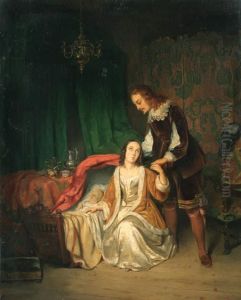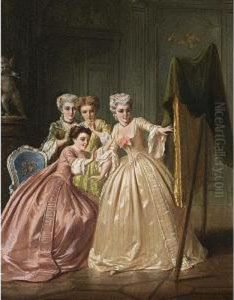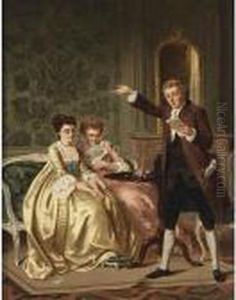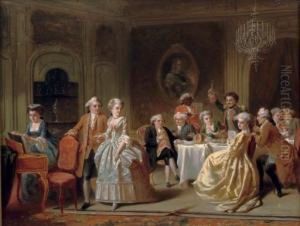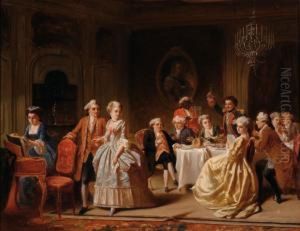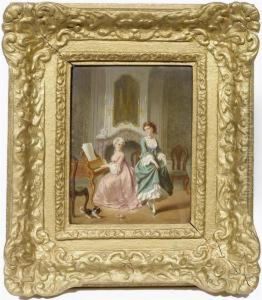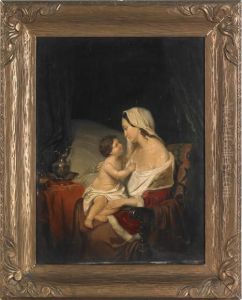Petrus Theodorus Wijngaerdt Paintings
Petrus Theodorus Wijngaerdt was an influential Dutch artist known for his role in the 19th-century Romantic movement in the Netherlands. Born on January 19, 1816, in Rotterdam, he developed an early interest in art and went on to study at the Academy of Fine Arts in his hometown. Wijngaerdt's early works were primarily influenced by the Romantic spirit of the time, which emphasized emotion and individualism, often through the depiction of historical and natural themes.
Wijngaerdt's oeuvre is characterized by its dramatic use of color and light, often focusing on landscapes, which he rendered with a sense of grandeur and emotional depth. He also painted historical scenes and still lifes, but it was his landscapes that garnered him the most acclaim. Wijngaerdt's paintings reflected the Romantic ideal of the sublime in nature, where the natural world was seen as a powerful force that could evoke deep emotional responses.
Throughout his career, Wijngaerdt was active in the Dutch art community. He was a member of the Royal Academy of Fine Arts in Amsterdam and served as a teacher and mentor to younger artists. His influence extended to the Hague School of painters, who would come to dominate Dutch art in the latter half of the 19th century with their focus on realism and naturalistic depictions of the Dutch landscape.
Despite his influence during his lifetime, Wijngaerdt's name is not as well-known today as some of his contemporaries. Nevertheless, his work is still appreciated by art historians and collectors for its contribution to the Romantic movement in the Netherlands. Wijngaerdt's legacy includes not only his paintings but also his impact on a generation of artists who followed him.
Petrus Theodorus Wijngaerdt passed away on December 18, 1893, in Amsterdam. His works are part of several Dutch museum collections, including the Rijksmuseum in Amsterdam, where they continue to be studied and admired for their vibrant portrayal of 19th-century Romanticism.
